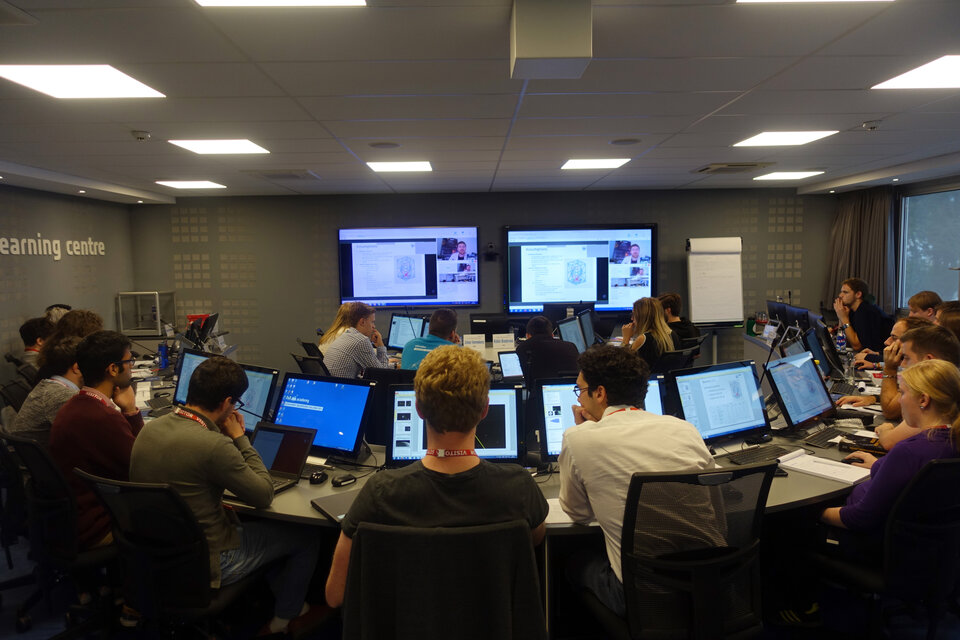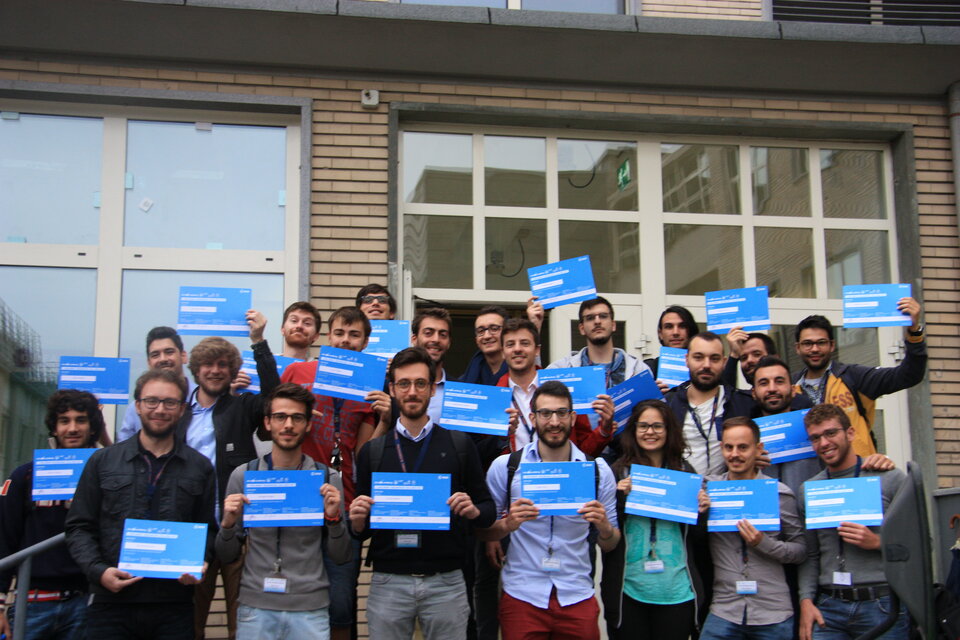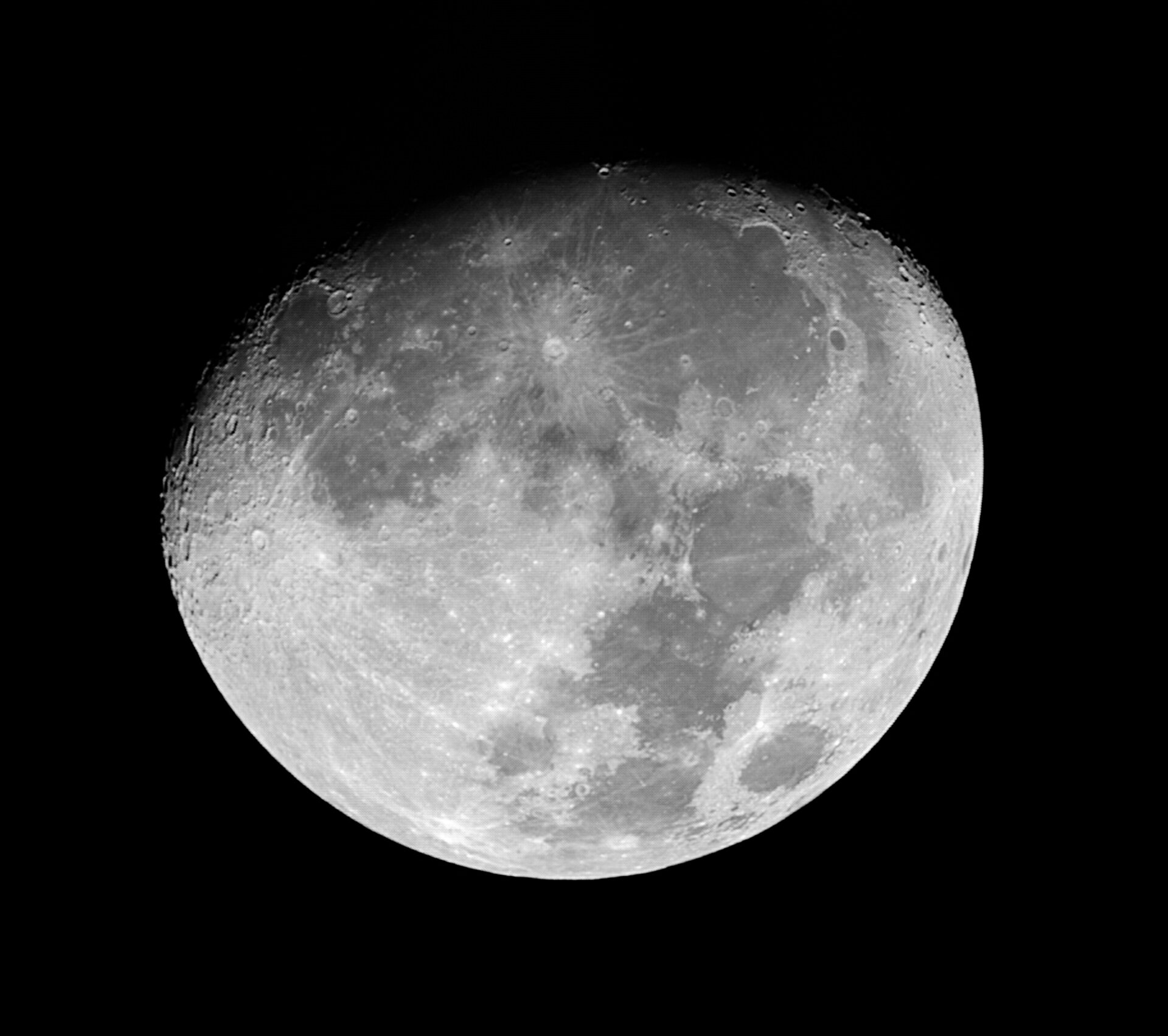Students shoot for the Moon in ESA’s Concurrent Engineering Challenge 2017
Concurrent Engineering is a method of designing and developing products for the space sector. Contrary to traditional design methods, in concurrent engineering all subsystems are designed simultaneously. As this is so different to conventional approaches, ESA has started holding Concurrent Engineering Workshops to help the next generation of scientists and engineers appreciate the benefits it provides.
The first Concurrent Engineering Challenge was held between 12 and 15 September 2017, and was the fifth event using the ESA Academy’s Concurrent Design Facility. Twenty-two university students from 10 different ESA Member and Associate States participated to the challenge which took place at the ESA Academy’s Training and Learning Centre at the European space Security and Education Centre (ESEC) in Belgium. This resulted in a very diverse and multicultural environment for the students to work in and, as one British student from the Delft University of Technology said: “The Concurrent Engineering Challenge was an excellent learning opportunity. I thoroughly enjoyed working with 21 other highly motivated and capable young engineers and scientists from a diverse range of technical and cultural backgrounds, many of whom will remain good friends for years to come. We received outstanding support from ESA engineers who provided very valuable advice for both the concurrent design methodology and for our future paths in the space industry. I strongly recommend this challenge to any student looking to design space systems after their graduation.”
The participants were joined remotely by three other student groups participating from Concurrent Design Facilities located at three different European universities: Politecnico di Torino (Italy), University of Strathclyde (United Kingdom), and Technical University of Madrid (Spain). Each group included 15 to 25 university students. In total, 88 university students took part in this challenge!
Each group of students was supported by two system engineers with concurrent engineering experience. The four groups were not competing against each other. Rather, this was a cooperative effort. Although each group produced their own mission proposal, video conferencing was used to share each day’s progress, raise any particular difficulties student groups were facing, and receive helpful input from the participants in the other groups. A Spanish student from the ISAE-SUPAERO said: “I can assure you that I will remember the experience in the Concurrent Engineering Challenge for the rest of my life. I have learned lot of valuable things from experts in the space sector that will be decisive for my future career.”
In the afternoon of 11 September the students participating from ESEC met to prepare for the challenge starting the next day. System engineers from ESA’s Concurrent Engineering Section gave them an introduction to the concurrent engineering approach and helped them get familiar with the Open Concurrent Design Tool (OCDT). They also learned about the ESA Academy programme and had an exciting visit to the Proba satellite operations room. That evening the students played the EcoDesign board game to learn about the environmental impacts of a space mission. They asked many interesting questions and it was a good opportunity for them to get to know each other.
The Concurrent Engineering Challenge started the next day, which began with the four student groups meeting via video conferencing. They were briefed on their challenge – to design a mission to conduct science on the Moon – and the constraints they had be operating under.
Each group of students was then divided into teams to cover the mission’s different subsystems: configuration, structure, propulsion, mission analysis, attitude & orbit control, power, thermal, optics & sensors, communication & data handling and mechanisms.
Over the following days the four groups performed a first concurrent engineering iteration, working on the different subsystem designs, and making their initial computations and budget. Each group then remotely shared their first design and computations with the others.
During the third day, the students performed a second and final iteration to improve their mission design and to remain below the maximum total mass allowed.
On the last day of the challenge, the four groups froze their results. They then presented their final proposals to the other groups and the ESA experts. The students found it fascinating to see how each design had developed over such short timespans, and how they had taken different approaches to achieve the same goals.

The ESEC group in Belgium called their mission “Acquisition of MOON Data via South pole ExploratioN”, or AMOONDSEN for short, after Roald Amundsen, the leader of the first exploration of Earth’s South Pole. They suggested using a weak stability boundary transfer to get to the Moon, where their probe would be inserted into a frozen polar orbit. The mission risk was minimised by applying full redundancy to all subsystems, using existing components and a mono-propellant propulsion system, as well as body-mounted solar panels. An octagonal structure was selected with passive thermal control and an instrument package capable of functioning up to 530km altitude. During the two years of observation, over 200,000 pictures could be taken, in order to get a full map of the South Polar Region.
The general plans devised by the four groups were similar, but the design of each subsystem varied depending on the single components that were used, resulting in differences between the final configurations. Happily, all four groups were able to meet the challenge objective to reach a solid and functioning design, which respected all the mission requirements! Finally, the universities participating to the Challenge were given a chance to give feedback on their experiences:

“The Challenge was a great experience for students to learn about the concurrent engineering approach, systems design and the use of ESA's OCDT tool. The students thoroughly enjoyed participating in the challenge and learning about the sharing of data in a timely and collaborative manner in order to come to a sound and solid design of their MIOS concept. Over the course of the four days, the students performed admirably and the experience allowed them to expand their knowledge of their subject area while learning new approaches to space systems design. The challenge also allowed for the testing of the Concurrent and Collaborative Design Studio at the university and provided a range of potential improvements which can be made for future studies.” (University of Strathclyde, United Kingdom).

“The challenge has been educational and stimulating. The process of adapting the modules to the mission has been a great chance to learn fast. Our students have enjoyed to collaborate together during this intense and exciting challenge. This has been an enriching experience. It has been really helpful to learn how to efficiently share calculation results avoiding data mismatch and converge to a preliminary design.” (Technical University of Madrid, Spain).

“The challenge offered both students and professors a unique opportunity to learn about space missions design and concurrent engineering. It was a fantastic chance to get in touch with other students, professors and experts, with different background coming from all over Europe. We do hope that this initiative can lead to future collaboration on the long-term. Even if we were spread over four different locations, we could work as a multi-disciplinary team in a multicultural environment. It was great to test our tools and the whole facility on a real mission design, obtaining excellent results in just 4 days!” (Politecnico di Torino, Italy).
After this successful pilot, ESA’s Education Office is planning to organise a second edition of the Concurrent Engineering Challenge in 2018.
- To find more information about upcoming ESA Academy training opportunities please visit: http://www.esa.int/Education/ESA_Academy/Current_opportunities
- To contact ESA Education Office please e-mail: esa.academy@esa.int


